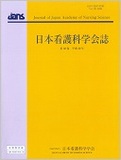Japanese
English
- 販売していません
- Abstract 文献概要
- 参考文献 Reference
要旨
目的:小児がんにより長期入院している学童・思春期の子どもの気持ちを看護師がどのように理解し,関わっているのかを記述する.
方法:Leiningerの民族看護学を参考に1小児病棟でフィールドワークを行い,データ分析した.
結果:「子どもの生活にアンテナを張り,その子らしさを捉える」「学童・思春期の見えにくい『子どもの世界』を知る」「子どもが『話しても良いかな』と思える人になる」「子どもが子どもなりに考えて発信できる機会を作る」「覚悟を決めて子どもからのサインを待つ」「ポロっと出てきた子どもの言葉を取り逃がさずに動きだす」という主要テーマが抽出された.
結論:看護師は「余白の時間」や「余計な話」を活用して「子どもの世界」を知り,見えにくい友人関係,素直な願望,価値観等を捉えていた.さらに,子どもが気持ちを話す関係作り,子どもの表現力を育てる等の積極的に動きながら「待つ」と,子どものサインを取り逃がさないよう静かに「待つ」の2通りの「待つ」関わりがあった.
Purpose: The aim of this study was to describe the involvement of nurses in understanding the feelings of school children and adolescents with pediatric cancer undergoing long-term hospitalization.
Methods: Leininger's ethnonursing method was used in this study. We conducted fieldwork at the pediatric ward to gather data for analysis.
Results: The following main themes were identified: (1) putting up an “antenna” to determine the children's daily lifestyle and understand their individual traits, (2) exploring about the difficultto-grasp “world of the child” in school children and adolescents, (3) becoming a person that the child feels they can talk to, (4) creating opportunities for the children to think and express themselves in their way, (5) waiting for a sign from the child with preparedness, and (6) taking actions and not dismissing words uttered by the children.
Conclusion: Nurses utilized their “periods of free time” and “unnecessary conversations” to discover “world of the child”. By discovering the world of the children, in particular their peer relationships, nurses were able to understand their honest desires and values, which could not be easily shown in the hospital setting. Nurses also determined the children's true intentions by waiting for them to express their feelings in their own time using two approaches. The first approach involved waiting while proactively taking action, such as cultivating the children's ability for self-expression and feelings, such as building a relationship in which the children felt they could talk to the nurse. The second approach involved waiting preparedly so as not to miss any difficultto-discern signs in the children.
Copyright © 2018, Japan Academy of Nursing Science. All rights reserved.


